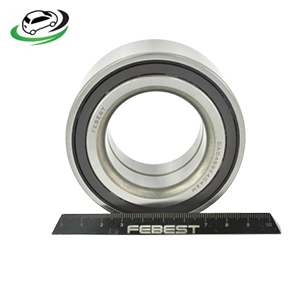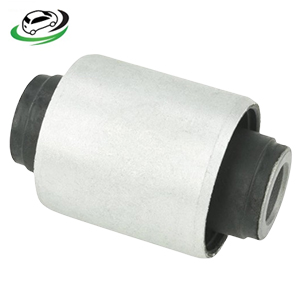Get Mazda Axela/Demio/Atenza/Mazda 6 Steering Tie Rod End LH
A steering tie rod end is a crucial component of a vehicle’s steering system that connects the steering rack or center link to the steering knuckle. Its primary function is to transmit the steering input from the steering wheel to the wheels, allowing the vehicle to change direction. Here’s a deeper definition of a steering tie rod end:
Construction and Function:
- Threaded Rod: A tie rod end typically consists of a threaded rod with a ball joint at one end.
- Ball Joint: The ball joint allows for articulation and movement, enabling the tie rod end to pivot as the steering angle changes.
- Grease Fitting: Many tie rod ends have a grease fitting to allow for lubrication, reducing friction and wear.
- Secured with Castle Nut: The tie rod end is secured to the steering knuckle with a castle nut and cotter pin or locking mechanism.
Benefits;
1. Precise Steering Control:
- Direct Wheel Movement: Tie rod ends ensure that steering input from the driver is translated accurately to the front wheels, allowing for precise control and responsiveness.
- Maintains Wheel Alignment: Properly functioning tie rod ends help maintain wheel alignment, ensuring that the vehicle tracks straight and true.
2. Enhanced Stability and Safety:
- Stability During Cornering: Tie rod ends contribute to the stability and handling of the vehicle, especially during cornering and maneuvering.
- Safe Handling in Emergency Situations: Reliable tie rod ends are essential for safe handling in emergency situations, such as sudden swerves or evasive maneuvers.
3. Durability and Longevity:
- Constructed for Durability: Tie rod ends are typically made from durable materials such as steel or aluminum alloy, designed to withstand the stresses and forces encountered during normal driving conditions.
- Long Lifespan: When properly maintained and lubricated, tie rod ends can last for many thousands of miles, providing long-term reliability and performance.
4. Reduction of Steering Play:
- Minimizes Steering Play: Worn tie rod ends can cause excessive play or looseness in the steering system, leading to a vague or imprecise steering feel. By maintaining tight connections between steering components, tie rod ends help minimize steering play.
5. Resistance to Wear and Tear:
- Resists Wear: High-quality tie rod ends are resistant to wear and tear, even under demanding driving conditions. This helps maintain consistent steering performance over time.
- Protects Steering Components: By absorbing and distributing forces and vibrations, tie rod ends help protect other steering components from premature wear and damage.
6. Improved Tire Wear:
- Even Tire Wear: Properly functioning tie rod ends contribute to even tire wear by maintaining proper wheel alignment. This prolongs the life of the tires and ensures optimal performance and safety.
Signs a car needs a new one;
1. Steering Play and Instability:
- Loose or Unresponsive Steering: Worn tie rod ends can result in excessive play or looseness in the steering wheel. You may notice a delay or lack of response when turning the steering wheel, especially when changing direction.
- Steering Wheel Wander: The vehicle may wander or drift to one side or feel less stable when driving in a straight line, indicating compromised steering control.
2. Steering Wheel Vibrations:
- Vibrations in the Steering Wheel: Excessive vibrations felt in the steering wheel, especially at higher speeds or during braking, can be a sign of worn tie rod ends. These vibrations may feel more pronounced when turning or cornering.
3. Uneven Tire Wear:
- Inner or Outer Tire Wear: Worn tie rod ends can lead to uneven tire wear, particularly on the front tires. Look for signs of excessive wear on the inner or outer edges of the tire tread.
4. Clicking or Clunking Noises:
- Audible Noise: Clicking, clunking, or popping noises coming from the front end of the vehicle, particularly when turning the steering wheel, may indicate worn or damaged tie rod ends. These noises result from excessive play or movement in the tie rod joints.
5. Visual Inspection:
- Visible Damage or Wear: Inspect the tie rod ends visually for signs of damage, such as bending, cracking, or excessive play in the joints. Pay attention to any visible signs of wear or corrosion on the tie rod ends.
- Leaking Grease: Some tie rod ends are equipped with grease fittings to lubricate the joints. Leakage of grease or signs of grease buildup around the tie rod ends may indicate a failure of the seals.
6. Steering Alignment Issues:
- Off-Center Steering Wheel: A steering wheel that is not centered when driving straight may indicate misalignment caused by worn tie rod ends.
- Poor Handling: Worn tie rod ends can affect vehicle handling and stability, particularly during cornering or sudden maneuvers.
Follow us on Facebook for more parts.



